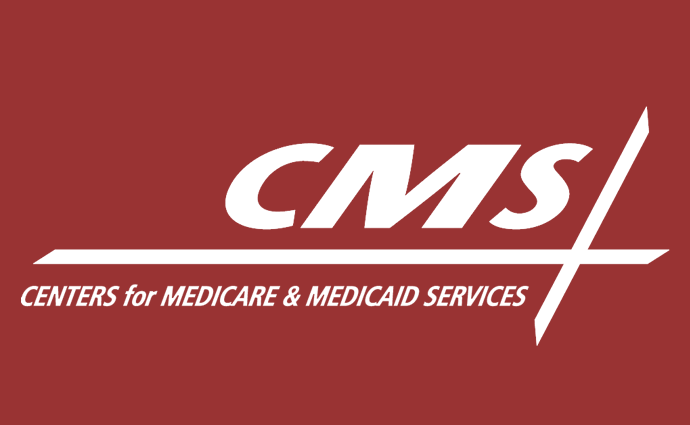CMS Introduces Health Equity Strategy for Public Payer Programs
The agency released a detailed strategy for all of its centers and offices to pursue related to health equity and outlined actions that these programs had already taken to align.

Source: CMS Logo
- CMS has released its strategy for health equity, which is the first pillar in the agency’s strategic vision.
“Advancing health equity is the core work of the Centers for Medicare & Medicaid Services. We can’t achieve our health system goals until everyone can attain the highest level of health. That’s why I am inviting the health care industry to work alongside CMS as we transform the way patients are cared for in our country,” said CMS Administrator Chiquita Brooks-LaSure.
“Health equity will be embedded within the DNA of CMS and serve as the lens through which we view all of our work. Our vision is clear and our goal is straightforward—we will not stop until every person has a fair and just opportunity to attain their optimal health.”
The agency will bring together healthcare stakeholders—including payers—to promote implementing a health equity strategy. The first meeting will address achieving health equity in maternal healthcare, specifically. It will occur during the summer of 2022.
Apart from these stakeholder meetings, however, CMS introduced various steps for its offices and centers to take. As part of the administration’s overarching health equity strategy, every center and office of the CMS agency will be required to incorporate a health equity focus into their vision.
READ MORE: CMS: 2023 Medicare Advantage, Part D Rate Sees 8.5% Revenue Boost
More specifically, CMS offices and centers will need to work toward closing gaps in care and improving the quality of care.
CMS offices and centers need to improve outreach efforts, a task that the Biden administration has already incorporated into their Affordable Care Act marketplace strategy. The administration increased funding for the Navigator program for 2022 so that organizations could hire more Navigators to reach out to underserved populations.
CMS added that access to linguistically appropriate services as well as cultural competence are critical elements of pursuing health equity. Studies have found that healthcare spending is lower among Hispanic individuals who are not proficient in English. Experts tie this trend lower healthcare utilization, potentially due to language barriers.
Community plays a significant role in health and healthcare. Therefore, CMS urged engagement with local communities as they develop policies and services. CMS offices and centers should work with community-based organizations to address social determinants of health and apply social needs quality measures.
Community-based organizations can also be involved in another difficult task related to health equity: gathering demographic data such as race and ethnicity, sexual orientation, income, disability status, and more.
READ MORE: 4 Ways That 1115 Medicaid Demonstrations Can Address Health Equity
Race and ethnicity data can be particularly challenging to collect. It is crucial that organizations seeking to gather this data recognize the reasons for an individual’s hesitancy to share such information, clearly explain the goals of the data collection, and pursue accuracy when gathering and using the data.
“Ensure CMS programs serve as a model and catalyst to advance health equity through our nation’s health care system, including with states, providers, plans, and other stakeholders,” CMS added as another goal for its offices and centers in the pursuit of health equity.
Health equity forms a pillar of the 2022 CMS Strategic Plan.
CMS also outlined actions that the various parts of the agency have already taken to promote health equity.
The Center for Medicare has taken steps to improve health equity in its Medicare Advantage and Medicare Part D programs by implementing a Health Equity Index. The index was included in the center’s 2023 Medicare Advantage and Part D Advance Notice.
READ MORE: CMS Seeks Input on Medicare Advantage, Part D Health Equity Index
Additionally, the center has expanded the number of graduate medical education slots, proposed reinstating the multi-language Medicare Advantage and Medicare Part D requirement, and proposed supplemental payments for Indian Health Service and Tribal hospitals.
Center for Medicare and Medicaid Innovation (CMMI) has started to integrate health equity into its quality measures and model designs. The center has made payment adjustments or benefits enhancements for historically underserved populations, boosted safety net provider participation, and improved data collection.
The Medicare-Medicaid Coordination Office has supported disability-competent care, offered improved outreach for the Medicare Savings Programs, and improved care coordination for dual eligible beneficiaries.
Lastly, the Center for Medicaid and CHIP Services has reformed Medicaid policies that restricted access to care or coverage, such as removing work requirements. The center has also improved postpartum access to care and continuity of coverage, aimed to improve care and coverage for justice-involved individuals, and boosted funding for home- and community-based services (HCBS).
The center also released a request for information on access to care, enrollment, and maintenance of coverage in Medicaid and CHIP.
